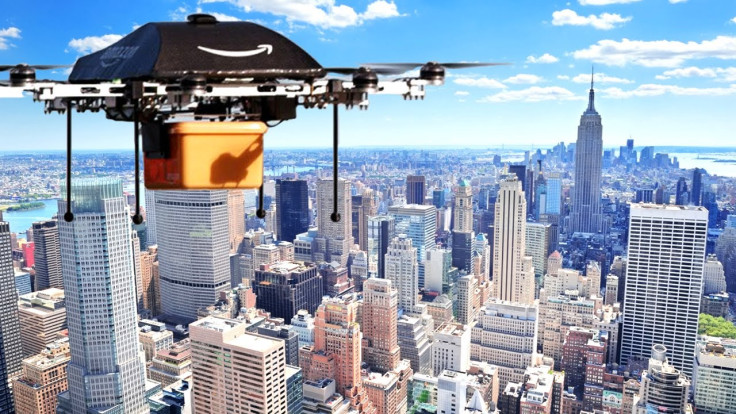Amazon: Drone approved by FAA is already obsolete and we want out-of-sight flights

Amazon has told the US Senate Committee on commerce, science and transportation the Federal Aviation Administration (FAA) is taking too long to approve drone tests and regulations for commercial drones.
On 20 March, the FAA finally granted Amazon an experimental airworthiness certificate, enabling it to test out unmanned aerial vehicles (UAV) for a delivery service, as long as they are flown at a maximum height of 400ft and remain within the line of sight of the pilot.
The company had first asked for approval to test its Amazon Prime service back in July 2014.
"The UAS [unmanned aircraft system] approved last week by the FAA has already become obsolete," Paul Misener, Amazon's vice president of global public policy, said at the Senate hearing on 24 March, according to Computerworld. "We're allowed to innovate in other countries in ways that we cannot in the US."
Beyond line-of-sight is needed for commercial drones
Misener told the Senate that apart from the US, no other country had taken longer than two months to approve any Amazon drone tests and that a more advanced UAV was already being flown in several countries including the UK.
The FAA proposed commercial drone regulations on 15 February after a turbulent 12 months whereby the government body had initially been strongly against UAVs being flown for any commercial reason whatsoever. The UK also followed suit on 5 March, with similar rules that also ban UAV flights from leaving the sight of the operator.
This rule particularly annoys Amazon and Misener emphasised this point several times during his testimony to the senate, saying: "It needs to go further to beyond line of sight and to highly automated operation."
Blanket rule for commercial UAV flights below 200ft
Earlier on 24 March before Amazon's testimony to the Senate, the FAA announced "an interim policy to speed up airspace authorisations for certain commercial unmanned aircraft (UAS) operators who obtain Section 333 exemptions".
In translation, this means the FAA will now allow all commercial drone flights below 200ft but they have to be on a special list of vendors already working with the aviation authority, which currently totals about 45 companies.
Of course, you can still apply, and research institutions or government agencies have a pretty good chance of being granted a Certificate of Waiver or Authorisation (COA). Businesses on the other hand will have to apply through Section 333 of the FAA Modernisation and Reform Act of 2012, and will only be granted a certificate if their UAVs meet specific guidelines.
According to Fortune, gaining approval from the FAA through Section 333 is a slow, frustrating and arduous process. Only 53 applications under Section 333 have been approved for 45 companies and another 600 applications are still pending.
The new blanket legislation enables these applications to get moving much faster as the companies that have received Section 333 exemptions were previously still required to file flight plans and obtain additional air traffic control authorisation for every single test flight they planned.
© Copyright IBTimes 2025. All rights reserved.





















